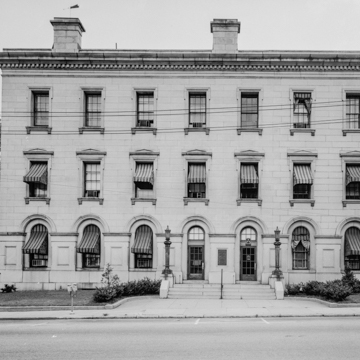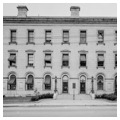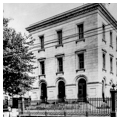You are here
City Hall (U.S. Custom House and Post Office)
While he was supervising architect of the U.S. Treasury, Young produced many Renaissance Revival designs for public buildings and helped make the style popular. This building is similar to many others and employs details repeatedly used in Young's designs. His buildings have a dignity and classical organization that work well in an urban streetscape and are reasonably economical in the use of fine materials. The ashlar building is constructed of stone quarried in Dinwiddie County and known as Petersburg granite. The three bays to the south were added in 1908. The use of iron in construction, motivated at least in part by its perceived value in fireproofing, became common from the 1850s. In the Custom House, cast and wrought iron were used for internal columns, the roof structure, fencing, and mantels. The hollow interior iron columns were painted in imitation of Italian marble and doubled as ducts for the heating system. Although decorative cast-iron columns had been used in Petersburg since 1815, here they were employed as structural elements. During the Civil War, the building served as the city's Confederate headquarters, and the roof was used as their signal station and as a favorite place to view the fighting on the eastern front. When the American flag was raised over these headquarters on April 3, 1865, it signaled the end of the long Siege of Petersburg and the capitulation of the city.
Writing Credits
If SAH Archipedia has been useful to you, please consider supporting it.
SAH Archipedia tells the story of the United States through its buildings, landscapes, and cities. This freely available resource empowers the public with authoritative knowledge that deepens their understanding and appreciation of the built environment. But the Society of Architectural Historians, which created SAH Archipedia with University of Virginia Press, needs your support to maintain the high-caliber research, writing, photography, cartography, editing, design, and programming that make SAH Archipedia a trusted online resource available to all who value the history of place, heritage tourism, and learning.




